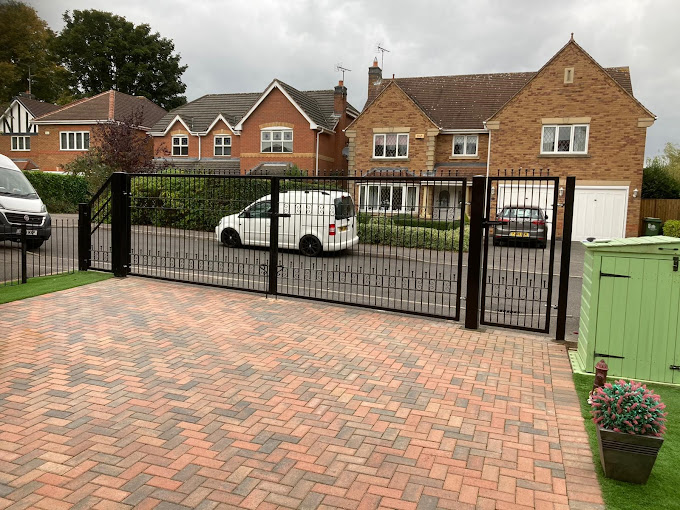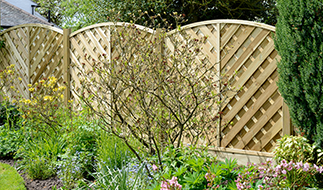Rural vs Urban Gates
- Gates
- Railings
- Fencing
- Accessories
& Fitting- Sheds
& Storage- Garden Structures
- Design
& StyleMetal Gates & Railings- Info
& HelpLocation dictates everything when it comes to gate selection. A stunning oak estate gate that looks magnificent sweeping into a Hampshire farmhouse would be completely wrong outside a Birmingham terrace. Yet many homeowners focus solely on appearance, missing the crucial connection between environment and functionality.
The divide isn't just aesthetic. Rural and urban properties face fundamentally different challenges – from weather exposure to security concerns, from space constraints to architectural expectations. Understanding these differences prevents costly mistakes and ensures your gate actually works for your specific situation.
.jpg)
The Rural Reality
Country properties deal with extremes. Weather hits harder without urban shelter – driving rain, fierce winds, and temperature swings that would surprise city dwellers. Then there's access. Delivery trucks need room to manoeuvre. Oil tankers require wide clearance. Even the postman might be driving a van rather than walking.
Space becomes an advantage rather than a constraint. Double gates spanning 12 feet aren't unusual – they'd be impossible in most urban settings but work perfectly for rural driveways. The scale changes everything about what's possible.
Material choice matters more in exposed locations. Oak weathers to silver-grey over decades rather than deteriorating. Iroko handles moisture without the rot issues that plague cheaper timber. Traditional wrought iron develops character through weathering rather than looking tired.
Modern materials perform differently too. Pressure-treated softwood holds up remarkably well when properly maintained, offering significant cost savings over hardwood. Aluminium avoids the maintenance entirely but needs powder coating robust enough for full weather exposure.
The aesthetic question often answers itself. Rural gates should complement landscapes, not dominate them. Five-bar designs became classic for good reason – they work visually with traditional architecture and natural settings. Ornate metalwork suits period properties. Clean contemporary lines look out of place against stone cottages but perfect with modern barn conversions.
Security considerations differ significantly. Rural crime focuses on outbuildings, machinery, and vehicles rather than opportunistic break-ins. Gates need to deter professional thieves with tools and transport rather than casual intruders. This often means substantial construction rather than clever locking mechanisms.
.jpg)
Urban Complications
City and suburban properties fight space battles rural homeowners never face. Driveway widths measured in feet rather than yards. Pavement access that can't be blocked. Neighbours close enough to be affected by gate operation.
Bi-folding gates solve the space problem elegantly. They need just quarter-width clearance when open, perfect for tight urban plots. Sliding gates work where there's room alongside the opening but require robust track systems on uneven ground.
Side access becomes critical in urban areas. Rear garden entry through the house isn't practical for most activities. Yet side returns are often narrow, limiting gate options. Height matters more than width – 6-foot gates provide privacy while 8-foot versions ensure security. The balance depends on your specific concerns.
Security needs shift entirely. Urban crime tends toward opportunistic rather than planned theft. Quick access matters more than ultimate strength. Automatic systems become worthwhile investments when leaving becomes routine. Good lighting integration deters more effectively than heavy-duty locks alone.
Architectural harmony can't be ignored in built-up areas. Victorian streets demand period-appropriate designs. Modern developments expect contemporary styling. Getting this wrong affects not just appearance but property values. Planning departments in conservation areas actively enforce architectural consistency.
Noise becomes a consideration that rural properties rarely face. Gate hinges squeaking at 6am upset neighbours. Heavy gates slamming shut disturb nearby homes. Material choice affects sound as much as appearance.
Making Location Work
The key insight isn't choosing between rural and urban styles – it's understanding how location shapes requirements and working with those constraints rather than against them.
Rural properties benefit from traditional approaches for good reason. They've been tested over centuries in similar conditions. Modern materials and methods can improve performance but shouldn't ignore proven solutions.
Urban properties need innovation precisely because traditional methods don't address space constraints and security concerns. Bi-folding mechanisms, automated systems, and space-efficient designs solve problems that didn't exist when traditional gates developed.
Climate affects everything regardless of location. Coastal properties face salt corrosion whether rural or urban. Exposed hilltop sites deal with wind loads that sheltered valleys avoid. Choosing materials appropriate for specific conditions matters more than following general location rules.
Budget considerations scale with location complexity. Simple rural gates can use basic materials effectively. Urban installations often require sophisticated hardware, automated systems, or made-to-measure solutions that increase costs significantly.

The Selection Process
Start with practical requirements rather than aesthetic preferences. How wide does the opening need to be? What vehicles need access? How much maintenance can you realistically manage? What security level do you actually need?
Then consider constraints. How much space is available? What architectural style must you match? Are there planning restrictions? What's your realistic budget including installation?
Material choice follows naturally from these factors. Hardwood makes sense for rural properties with generous budgets and traditional architecture. Aluminium gates suits urban locations needing low maintenance and contemporary styling. Composite materials bridge gaps when traditional materials don't quite work.
Installation complexity varies dramatically between locations. Rural properties often have room for DIY approaches. Urban sites frequently need professional installation to handle space constraints and ensure proper operation.
The result should feel inevitable rather than chosen. The right gate for your location won't need explaining or defending – it'll obviously belong where it's installed. That's the difference between decoration and proper design.
- Railings




